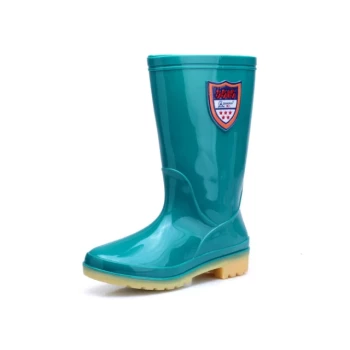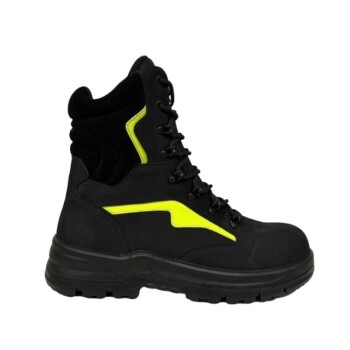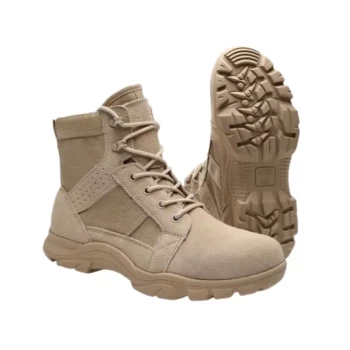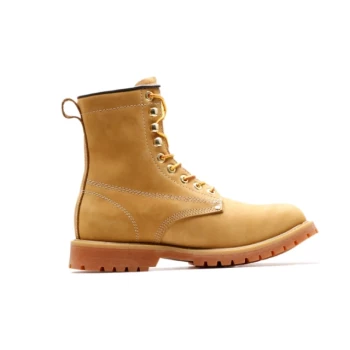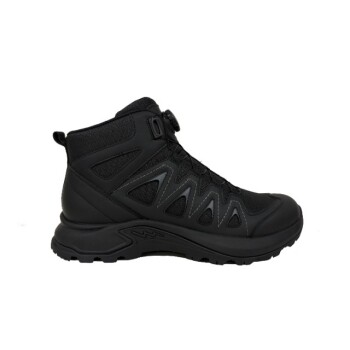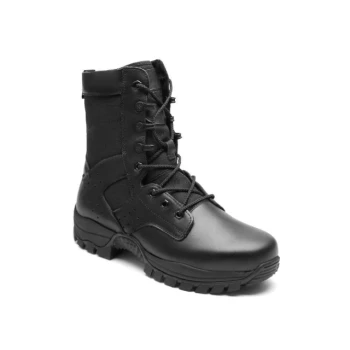At their core, walking boots are a specialized tool for a specific job. They excel at providing robust support, protection, and grip for demanding conditions, particularly on uneven terrain or over long distances. Their primary benefits are enhanced stability to prevent injury and durability to withstand harsh environments.
The decision to use a walking boot is fundamentally a trade-off. You are choosing to prioritize maximum protection and ankle support over the lightness and agility offered by other types of footwear like trail shoes.
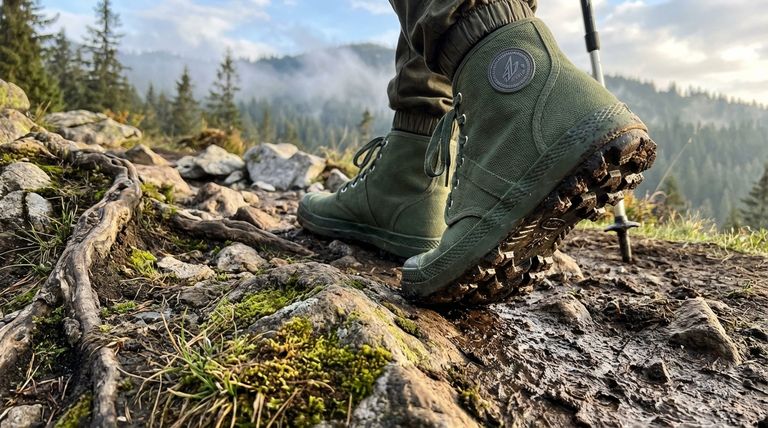
The Core Purpose: Unwavering Support and Protection
Walking boots are engineered from the ground up to shield your feet and ankles from the stresses of challenging terrain. This design philosophy manifests in several key areas.
Unwavering Ankle Support
The defining feature of a walking boot is its high-cut design that surrounds the ankle. This structure provides crucial stability, significantly reducing the risk of twists and sprains on rocky, uneven, or slippery ground.
Protection From Hazards
The sturdy construction, often using leather or tough synthetic materials, acts as armor for your feet. It protects you from sharp rocks, gnarled roots, and other impacts far more effectively than a standard shoe.
Superior Grip and Traction
Boots are built with rugged outsoles featuring deep lugs. This aggressive tread is designed to bite into loose dirt, mud, and wet surfaces, providing confident traction where lighter footwear would slip.
Designed for Demanding Conditions
The benefits of a boot become most apparent when the mileage increases or the trail becomes more rugged. They are built for endurance, not just a casual stroll.
Long-Distance Comfort
While they may feel heavy at first, the stiff soles and substantial cushioning in walking boots reduce foot fatigue over many miles. This is especially critical when carrying the extra weight of a backpack.
Lasting Durability
Walking boots are constructed with durability as a primary concern. Their robust materials and build quality mean they can withstand significant abrasion and abuse, lasting far longer than lighter alternatives on rough terrain.
Understanding the Trade-offs
No single piece of footwear is perfect for every situation. The very features that make boots effective in some scenarios create disadvantages in others.
The Inevitable Factor of Weight
Support and durability come at the cost of weight. Walking boots are the heaviest category of hiking footwear. This added mass requires more energy to lift with every step, which can increase fatigue over a long day.
Reduced Flexibility and Agility
The same stiffness that provides support also limits the natural flex of your foot. This can make boots feel clumsy or less nimble compared to a trail runner, especially on simple, flat trails where ankle support is less critical.
Breathability and Waterproofing
Many boots feature a waterproof membrane to keep your feet dry from external moisture like rain or puddles. However, this can also trap sweat and heat, making them feel warm in hot weather and potentially leading to blisters if not managed properly.
Limitations in Specific Environments
While excellent for wet trails, most walking boots are not designed for submersion in deep water, deep mud, or heavy snow. These extreme conditions require specialized footwear to remain effective and keep you dry.
How to Choose the Right Footwear for Your Hike
Selecting the correct footwear requires honestly assessing your intended activity and the terrain you will face.
- If your primary focus is maximum stability and carrying a heavy pack on rugged trails: A traditional walking boot is the correct tool, providing essential support to prevent injury.
- If your primary focus is speed and agility on well-maintained paths: You should consider a lighter trail running shoe, as a boot's weight and stiffness will be a clear disadvantage.
- If your primary focus is a balance of support and low weight for varied day hikes: A mid-height hiking boot or a sturdy hiking shoe often provides the best compromise of features.
Ultimately, choosing the right footwear is about matching the tool to the terrain, ensuring every step you take is confident and protected.
Summary Table:
| Pros of Walking Boots | Cons of Walking Boots |
|---|---|
| Superior ankle support and stability | Heavier than trail shoes, increasing fatigue |
| Excellent protection from rocks and debris | Reduced flexibility and agility |
| Aggressive grip for rugged terrain | Can be less breathable, trapping heat and sweat |
| Durable construction for long-term use | Not ideal for fast, flat trails or deep water/mud |
| Comfort and reduced fatigue over long distances | Longer break-in period required |
Ready to Find the Perfect Boot for Your Needs?
As a large-scale manufacturer, 3515 produces a comprehensive range of durable, high-performance footwear for distributors, brand owners, and bulk clients. Whether you need rugged walking boots optimized for support and protection, or any other type of shoe or boot, our production capabilities ensure quality, durability, and the perfect fit for your market.
Let's discuss how we can support your business: Contact our team today to explore our full catalog and manufacturing solutions.
Visual Guide
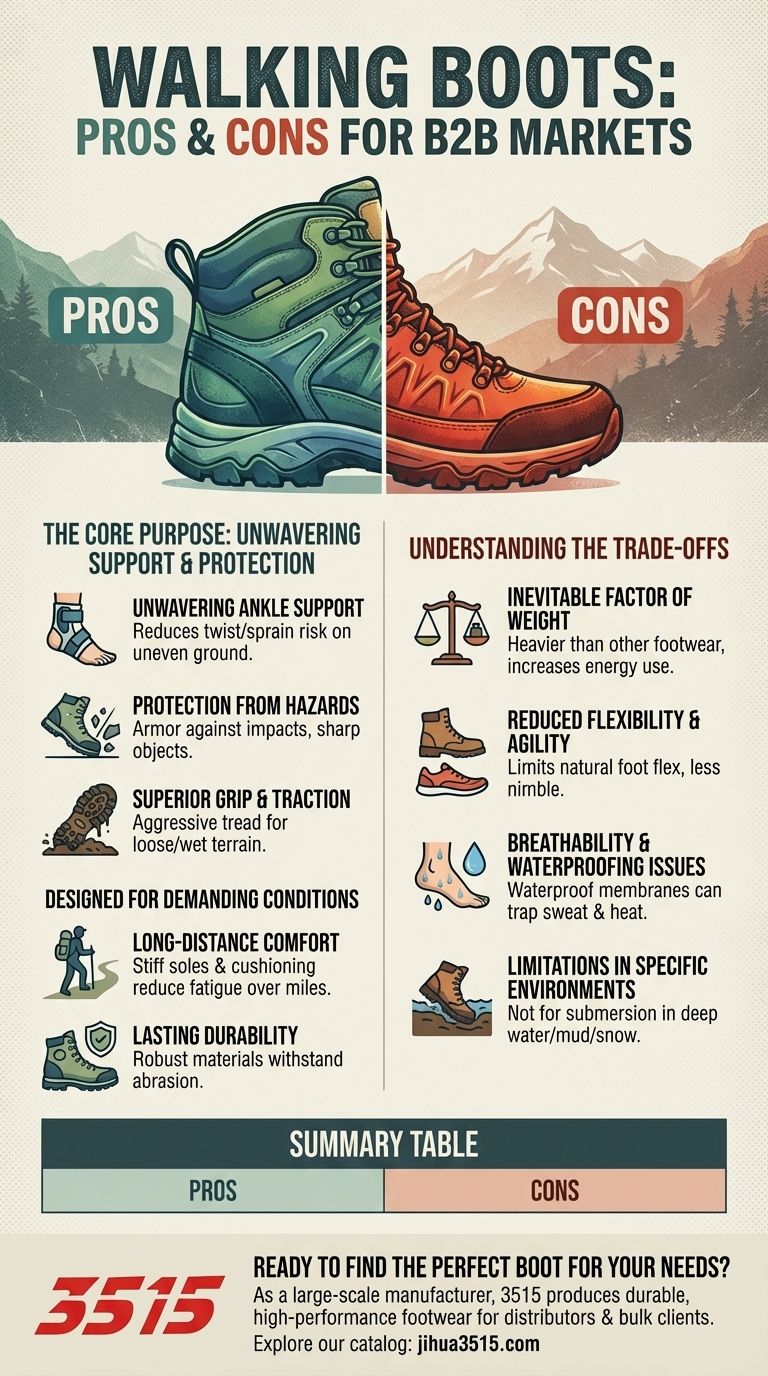
Related Products
- Factory-Direct Wholesale Canvas Boots with High-Traction Rubber Soles
- High Performance Fire-Retardant Waterproof Safety Boots
- Premium Wholesale Waterproof Safety Boots High Performance Protection for Industrial Markets
- Premium Grain Leather Safety Boots for Bulk Supply
- Premium Wholesale Wheat Nubuck Safety Boot with Rapid Lacing System
People Also Ask
- Why are rubber soles beneficial in cold-weather boots? Superior Traction & Waterproofing
- What factors determine the slip resistance of rubber-soled shoes? Tread, Compound & Design Explained
- What are the advantages of rubber soles in safety boots? Unbeatable Grip & Durability
- Why is rubber commonly used for non-slip soles? The Science of Superior Grip
- What role do slip-resistant rubber materials play in safety shoes? Ensuring Grip and Stability in Hazardous Workplaces









